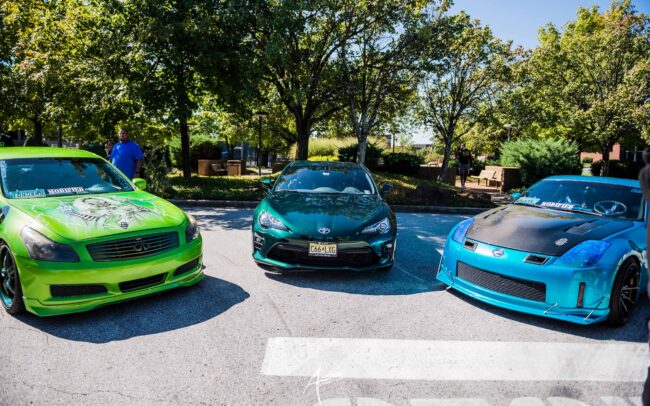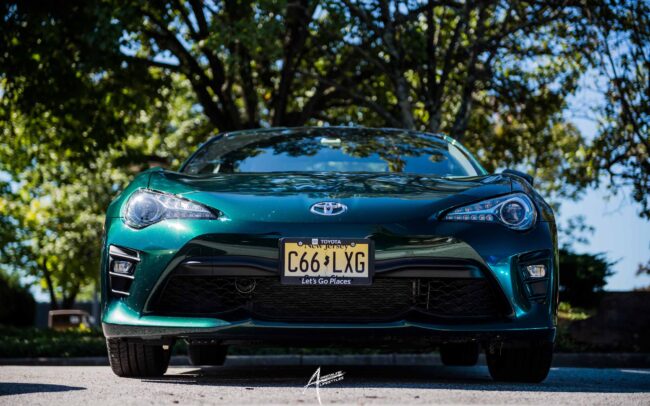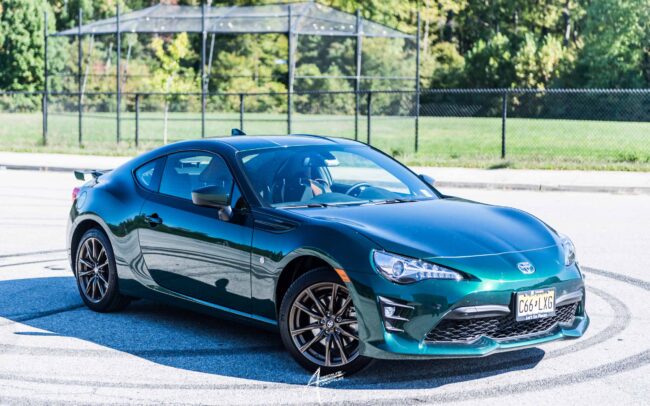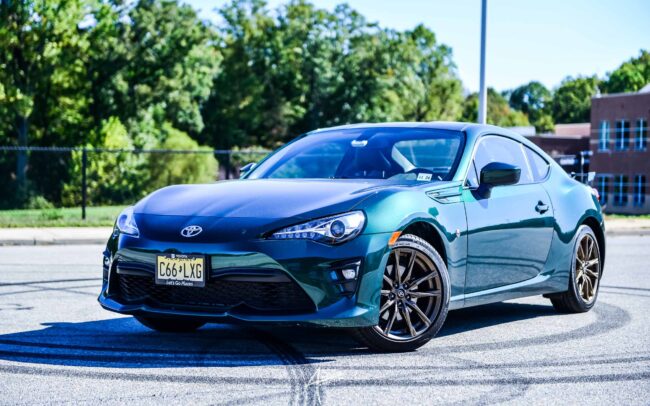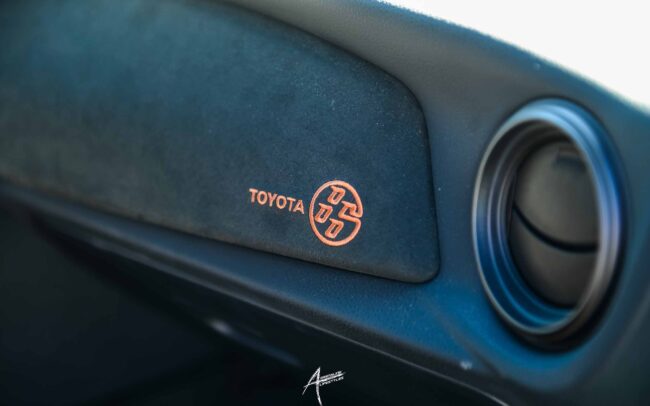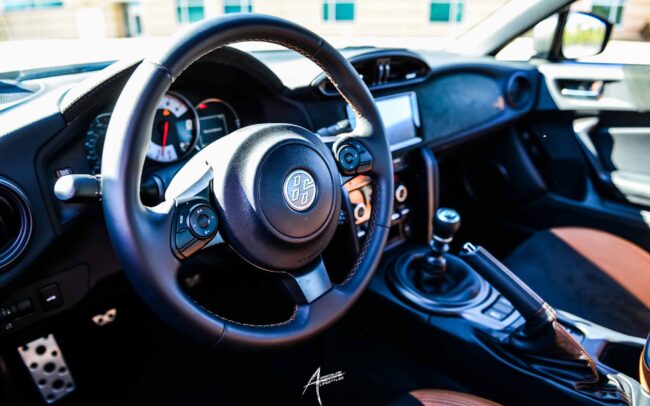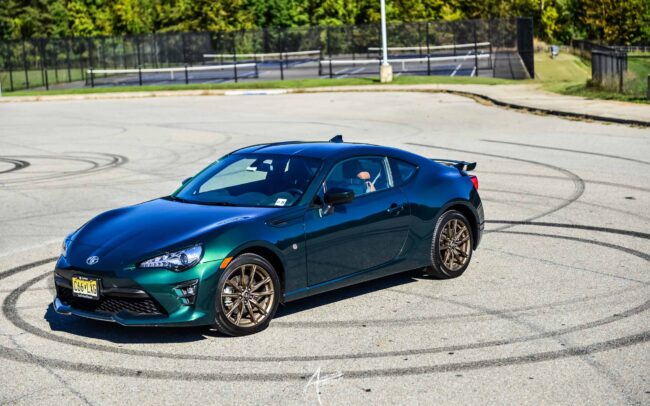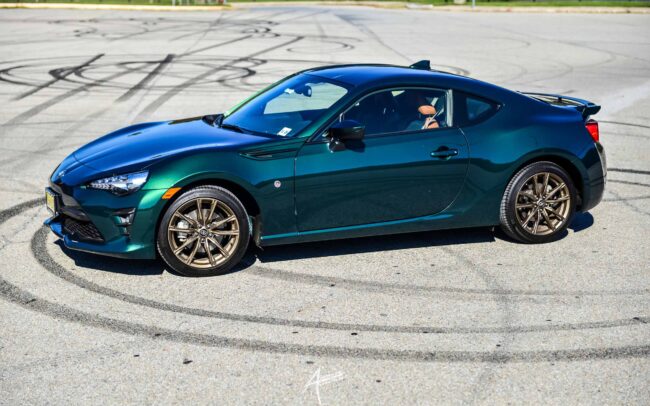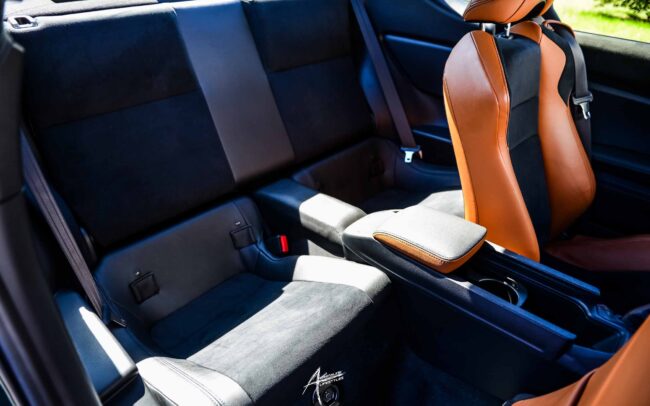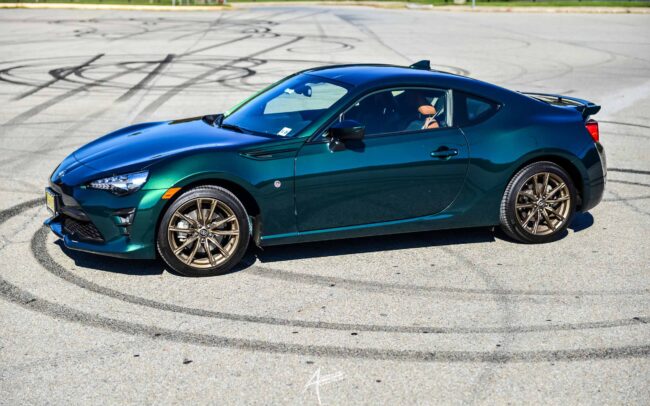
Experienced by Adrian McQueen
Photography by Adrenaline Lifestyles
This week was our review period for the 2020 Toyota 86 Hakone edition, so we decided to showcase it and get some fan feedback. The Toyota 86 is a 2+2 sports car jointly developed by Toyota and Subaru. It is widely known for rally, club and drift racing. Formerly known as the Scion FR-S, Toyota markets the sports car as the 86 in Asia, Australia, North America, South Africa and South America. The word “Hakone” is derived from a famous turnpike in Japan. Many have noted it to be one of the most beautiful winding roads there is, especially with the great view of Mt. Fuji.
Ok, enough of the history lesson, it is time to get into the ride. For starters, we reviewed the Hakone edition of the Toyota 86. The Hakone green is a dark emerald color that resembles all the trees you see driving through the Hakone Turnpike. The 17-inch bronze alloy wheels, 86 badging, matte black rear wing, aerodynamic underbody panel, dual chrome-tipped exhaust, LED headlights/daytime running lights/fog lights and LED rear combo tail lights all add to the 86’s sporty and aggressive exterior. The 86 can also come equipped with the TRD package which offers a set of Sachs dampers, for improved handling, a set of 18-inch wheels with Michelin Pilot Sport 4 tires and of Brembo brakes.
The 86 has a nice interior with alacantara/leather updates on the tan and black seats, dash and interior trim. The cabin is laced with suede-like material on top of the instrument cluster hood, black stitching and tan stitched “86” logo embroidered on the passenger-side dash. The leather trimmed steering wheel and leather wrapped parking brake handle feature the tan contrast stitching, along with the black sliding armrest. The rear seats are tight, and the rear seats fold down to allow for more trunk space. The Hakone Edition comes with a trunk mat with tan “86” embossing and contrast stitching as well as a pair of tan key gloves and folio cover with a debossed 86 logo and black stitching.
The 86 has a naturally-aspirated boxer engine under the hood, with a 2.0-liter engine and six-speed manual transmission that produces 205 horsepower and 156 pound-feet of torque. The performance in the ride delivered responsive acceleration and great braking. It is nimble and the steering is controlled when changing directions. The 86 is fun on a twisty highway and can offer a thrill ride on a straight stretch of road. I definitely would say that is was a fun ride.
The 86 comes with a 7.0-inch touchscreen with Bluetooth, Apple CarPlay and Android Auto. There is an 8-speaker system but it cannot really be heard over the great exhaust sound. A 4.2-inch driver display gives vehicle data like lap times, horsepower/torque curves, and a G-force friction circle. There is also a USB and 12-volt that are located up front. I will need the infotainment to be upgraded a bit. The Toyota Safety Sense 2.0 should be added as well. The Toyota 86 lacks Toyota’s Safety Sense suite of driver assistance technology, since it was developed in partnership with a Subaru. The included Star Safety System has Vehicle Stability Control (VSC), Traction Control (TRAC), Anti-lock Brake System (ABS), Electronic Brake-force Distribution, Brake Assist (BA) and Smart Stop Technology® (SST). I feel that Blind Spot Monitoring should be included as well. Looking at the rear view camera in the left corner of the rear view mirror would not have been my first choice to place that view.
Discussion about the Toyota 86 circled around the evolution of the vehicle. The Subaru BRZ, the Scion FR-S or now the Toyota 86 sums up the lifecycle of this 2+2 fastback coupé. Many asked how it compared to the Supra and why Toyota continues to sell both. For starters there is a significant price difference between the two vehicles and the Supra is more powerful and luxurious. The 86 is roughly $20,000 less than the Supra, the 86 offers a 6-speed manual and the Supra does not. The 86 delivers 205 hp, while the Supra 3.0 Premium delivers 335 hp. There is indeed a market for both vehicles.
The Toyota 86 Hakone edition sits in a competitive class amongst the Ford Mustang EcoBoost, Chevy Camaro Turbo 1LE and the Mazda Miata RF. Toyota has stated that the Hakone Edition will be limited in production and will come with the standard warranty options; 3-year/36,000-mile Comprehensive Basic, 5-year/60,000-mile Powertrain and 5-year/unlimited-mileage corrosion perforation. The 86 is rated at 21 mpg in the city, 28 mpg on the highway and 24 mpg combined with the manual transmission. The 2020 Toyota 86 is a sports car in the truest sense of the word. It is fun to drive and a beautiful looking automobile. Please enjoy the photo gallery.


